The independent newspaper of Washington University in St. Louis since 1878
CARNIVAL

Photo essay from the Thurtene Carnival hosted on the Danforth Campus (Scene, pg 3)
PELL PAST AND PRESENT
First-generation student numbers since 2008 (Scene, pg 4)

BEARS BASEBALL SWEEPS BRANDEIS
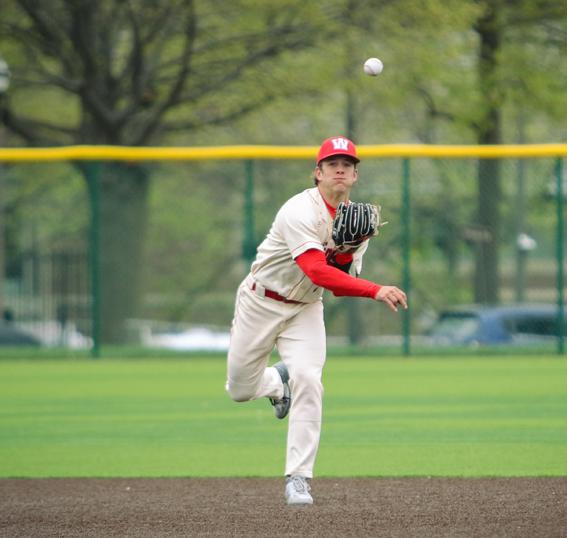
WashU second in conference going into final UAA weekend (Sports, pg 7)
Sexual assault awareness installation damaged on Mudd Field
the flags,” S.A.R.A.H. said in a written statement submitted to Student Life.
The club has reached out to both WUPD and the Relationship and Sexual Violence Prevention (RSVP) center about the incident but neither organization is aware of who was involved in damaging the banner.
Despite their protest being defaced, club members said they are “grateful” for the support they have received by the campus community following this incident, according to the same written statement. They also hope that students will continue to reach out to them and attend some of the events taking place later this month on April 25 and 26.
“Despite this unfortunate occurrence, S.A.R.A.H. will continue to advocate for and maintain a safer community for survivors on campus,” read the end of their written statement.
Students can call S.A.R.A.H. 24/7 throughout the rest of the semester until May 10. Their hotline number is: 314-935-8080.
A demonstration on Mudd Field organized by the Sexual Assault and Rape Anonymous Helpline (S.A.R.A.H.) for Sexual Assault Awarness month
(SAAM) was damaged on Friday, April 7th.
S.A.R.A.H. has raised awareness on campus during SAAM by planting flags or pinwheels on Mudd Field for the past 7 years. This year they reserved the field for the week
of April 2-9 and planted 2,505 purple flags, along with a banner explaining the demonstration. The demonstration represented the estimated number of students who experience nonconsensual sexual contact according to a survey by the Association of

Guest speakers reveal the secret to happiness
LUKE MYERS AND NINA GIRALDO CONTRIBUTING WRITER SENIOR NEWS EDITOR
The event “What Would You Do if You Only Had One Week to Live?” fostered dialogue among students and faculty on the science of happiness and finding meaning in a time-limited life, April 12.
The discussion was hosted by the Veritas Forum, a nonprofit Christian organization working to “seek truth” through questions of philosophy and science. In a lecture attended by 90 people, Lecturer in Philosophy Nic Koziloek moderated a conversation between Tim Bono, Lecturer in Psychological & Brain Sciences, and Lydia Dugdale, Associate Professor of Medicine at Columbia University.
Koziolek began the discussion by elaborating on the title of the lecture, revealing that the true question lies in how one should live their life knowing that time is finite. Bono explained how confronting the scarcity of time is important to recognizing its value.
“I think that it’s important for us to acknowledge the impermanence of life,” Bono said. “In our own minds, when we become aware of our impermanence, at least on Earth, that changes how we interact with things. It puts things into a proper perspective.”
Koziloek added that happiness is not a goal that can ever be
achieved, rather is an activity to be constantly worked on and maintained.
Bono shared that people often, mistakingly, look for a “wow factor” when searching for the secret of happiness, and should instead focus on the accumulation of small, daily intentional behaviors over time that contribute significantly to one’s well being.
Through the lens of her own medical background, Dugdale explained how patients frequently pass away without feeling ready or at peace.
“Why are patients dying so poorly? If you have your whole life to live knowing that you’re going to die, why is it that you are not really facing up to your mortality over the course of your life?” she asked.
Dugdale explained how the answers to these questions lie in the idea that life and death go hand in hand.
“If you want to die well, you have to live well,” she said.
“That is, the art of dying and the art of living well are very much intertwined. Let me begin cultivating today the kind of character that I want to be known for when I die.”
Bono also stressed the importance of nurturing relationships and expressing gratitude as a means of happy living, particularly in the age of social media where social comparison exists as one of the biggest detriments to happiness.
The speakers agreed that the cliche of “living everyday like it
is the last” is not a sustainable approach to living, as it overlooks the realities of day to day obligations. Instead, if you were to hear you only have a week left to live, you should not have to make any substantial changes to the life you are already living.
First-year James Corbett described the lecture as thought-provoking.
“I liked that Dr. Koziolek said that in the morning, he just drinks his cup of coffee and he sits down and he reads,” Corbett said. “I think that’s crucial to being happy — just sitting and reflecting and doing nothing sometimes…I take multiple sits throughout the day, just doing nothing.”
Junior Solomon Kang hopes to implement a balance between meeting everyday deadlines and investing in important relationships.
“I really like the idea that to die well you have to live well,” Kang said. “It made me reflect on the current status of my relationships with those around me and how I can invest more in those areas.”
In the lecture, Dugdale concluded that living well requires answering questions about one’s mortality.
“Part of living well is attending to these questions while you’re still able, because I’ve certainly cared for patients who were not able to think clearly at the end of their life,” she said. “So it’s just good to wrestle with this stuff and there’s no better place [to do that] than college.”
American Universities in 2019.
“On Friday, members of our group saw that the banner facing the DUC had been damaged. The stakes were broken and the banner was bundled using zip ties, obscuring the message that described the purpose of
ALIANA MEDIRATTA JUNIOR NEWS EDITOR
After decades of connecting Washington University students, picture-based online directory service WebSTAC FACES has stopped operating due to the rise in popularity of social media.
FACES allowed WashU students and faculty to search for individual students in a database of profiles that consisted of a student’s full name, email address, school division, and student ID photo. In order to find a student profile, searches could be conducted with first or last names, as well as additional search parameters such as school division.
In the first week of March, students were informed on their WebSTAC homepage that FACES was going to be decomissioned due to the rise of other social media platforms. By the end of the month, the platform had been taken down for good.
University Registrar Keri Disch said that taking down FACES had been on the IT Department’s to-do list for several years.
“A number of years ago,” Disch wrote in an email to Student Life, “knowing that commercial social media functionality and usage was outstripping anything WashU could or maybe should attempt to maintain, IT and my office reviewed this feature with an eye toward what we could decommission to support our journey to replace our core student systems. Since this is not required functionality to support registration or degree progress it was viewed as acceptable to sundown.”
The most comparable social media platform for an online directory is Instagram, which allows people to easily search for profiles by name
Editorial Note: S.A.R.A.H. cited the preservation of club members anonymity as why they denied requests to conduct an interview in person, over the phone or via Zoom.
ILLUSTRATION BY TUESDAY HADDEN

to find photos that their peers have posted.
However, not all WashU students use this platform, including sophomore Ella Brodey, who used FACES often as a way to look people up and remain connected with other students. However, Brodey also believes that FACES serves a unique purpose for everyone, even those who are active on social media.
“It’s not even used for social media, it’s just a good database to find people,” Brodey said. “If I get paired with someone I don’t know for a group project, I want to see what they look like if I’m meeting them somewhere. A lot of other people don’t have Instagram, so you can’t find everyone on there, but everyone was on FACES.”
Brodey said that she used FACES for more than just finding project partners though, recounting a time when she used it to help decorate for a dinner party.
“My friends and I printed out the FACES photos of everyone who was invited to the party and hung it up on the walls,” Brodey said. “There was just an entire wall covered with
SEE WEBSTAC PAGE 2
CONTACT BY POST ONE BROOKINGS DRIVE #1039 #320 DANFORTH UNIVERSITY CENTER ST. LOUIS, MO 63130-4899 CONTACT BY EMAIL EDITOR@STUDLIFE.COM NEWS@STUDLIFE.COM CALENDAR@STUDLIFE.COM CONTACT BY PHONE NEWSROOM 314.935.5995 ADVERTISING 314.935.4240 FAX 314.935.5938
WWW.STUDLIFE.COM VOLUME 144, NO. 22 THURSDAY, APRIL 20, 2023
AVI HOLZMAN MANAGING NEWS EDITOR
ELLE SU | STUDENT LIFE
S.A.R.A.H.’s public sexual assault installation, comprised of purple flags planted around Mudd Field was vandalized on April 7.
The end of an era: WebSTAC FACES is no longer
SCENE The Thurtene Carnival: Fun
and funnel cake
Carnival-goers enjoyed a variety of rides, many that spun and

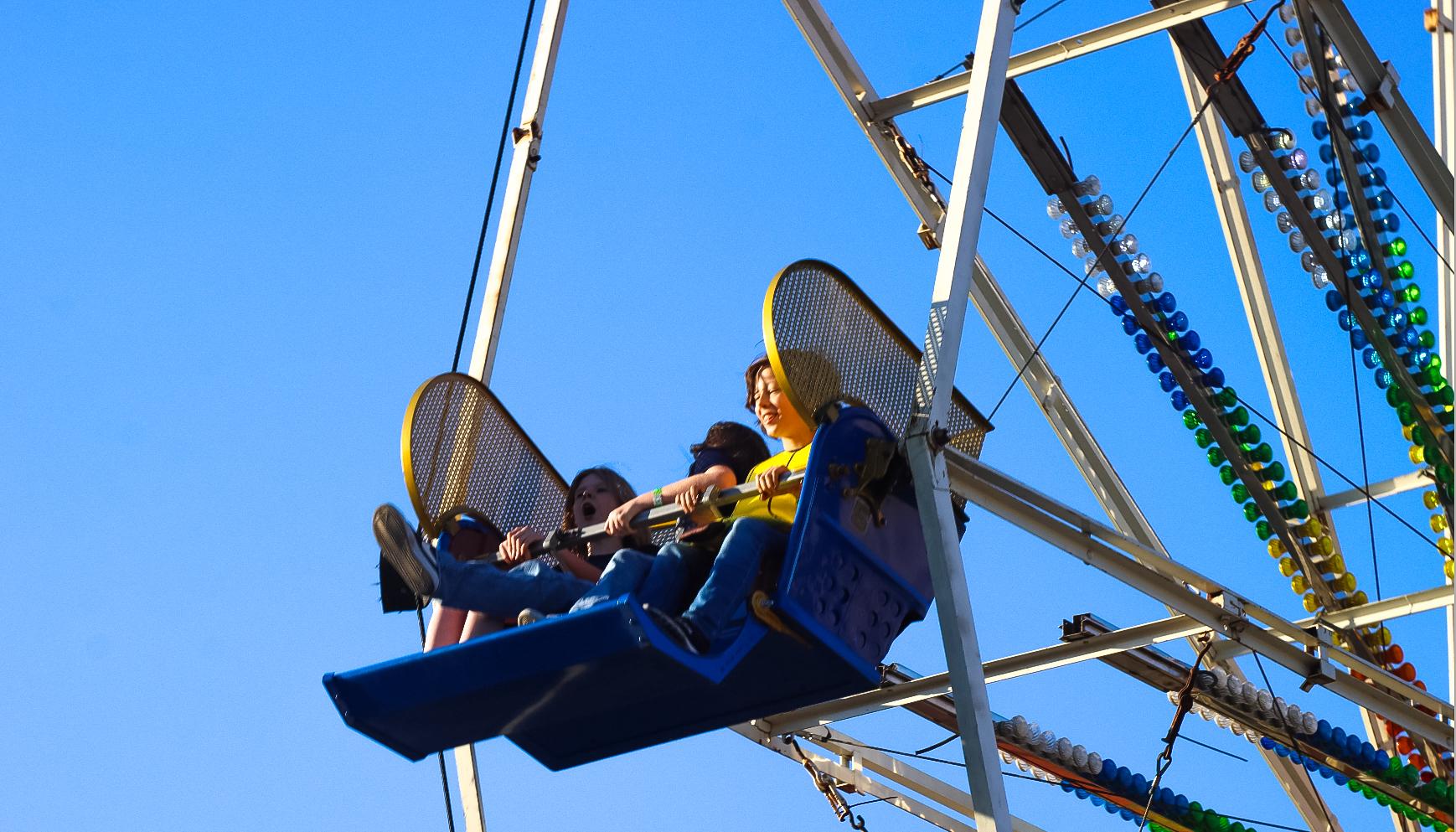


est of the bunch was the ferris wheel, which was
during
In the name of restoring justice: WashU’s Civil Rights & Restorative Justice Action Research (CRRJ) Lab
This semester, Sociology professor Dr. David Cunningham, African-African American Studies (AFAS) professor, Dr. Geoff Ward, and 18 undergraduate students began work in the Civil Rights & Restorative Justice Action Research (CRRJ) Lab. The lab is an extension of the CRRJ Clinic at Northeastern Law School, which works to investigate old cases of racially-motivated violence in the name of restorative justice.
Over the last decade, the Northeastern Clinic has been working on cases in the south and is just now moving into border states.
Ward explained that Missouri specifically is an important site when examining the history of racial violence since it was a state that grows out of a compromise of freedom.
“Missouri is their first border state that they’re examining, largely because Geoff [Ward] and I are here,” Cunningham said. “We could provide a nice home base for them and bring students in to contribute to that work.”
As a restorative justice clinic, their goal is not to actually solve the cases and bring them to trial, of course, since none of the perpetrators could still be alive to be prosecuted. Their goal is “reparative,” said Cunningham, as they seek acknowledgment and closure.
The Northeastern Clinic has now identified over 1000 cases of racially motivated homicide. Though they can’t prosecute, they can rectify wrongs in other ways, including altering falsified death certificates and placing historical commemorative markers. And by working with local communities, they work to build a dialogue around the events in the cases. CRRJ can also connect with descendants hurt by this violence. This sort of restorative justice technique is incredibly unique and was really spearheaded by the CRRJ clinic.
After working together at the Northeastern Clinic for over 15 years, Cunningham and Ward both found themselves at Washington University and decided to bring the project here. The “lab” is more of an imagined space, since meeting locations vary from the sociology suite, Siegle Hall, and the Special Collections part of Olin Library. Starting in January, they gathered students however they could to be the first cohort working in the CRRJ Lab.
The WashU lab differs from the Northeastern clinic mainly by the type of work that’s done by each team. At the Northeastern Law School, law students are “very much working within a law school model,” Cunningham said. This means using legal tools and techniques to solve the cases. At WashU, however, they are more interested
in bringing a greater historical understanding of the context of the times around the cases. This means understanding the inner workings of police and state agencies, for example, to see how it was possible that these acts of violence were not investigated in those times.
Tasked with investigating 27 Missouri cases between 1930 and 1948, the students are split into three teams: St. Louis, Kansas City, and rural Missouri towns. The students’ work ranges from archival and administrative work to physically finding documents that can’t be accessed from Boston in places like courthouses around the state.
While the legal work does not lead to prosecution, Ward and Cunningham see immense value in the program’s mission.
“Restorative justice not only focuses on repairing the harm of an offense to the victim but also in relation to the society itself … how crimes of violence and so forth adversely impact the social fabric itself,” Ward said.
It’s also important to the professors that students be exposed to this kind of fieldwork.
He called their previous work with Northeastern more “sporadic,” explaining how he was grateful for the ability to now have a coordinated effort with students.
“It’s really satisfying to work with WashU students
who are committed to these kinds of issues … Getting both students and ourselves out into these spaces to more directly engage with where these things occurred is really important,” Ward said.
This direct exposure brings to life the kind of things that students can read about in books. Students are also encouraged to think outside of the box in other ways, including how they present their research, inspiring them to pursue different mediums like short films.
This sort of nontraditional work is very initiative-driven. It’s not a class or a club, but something students must continue to work on in their own time.
In the last few weeks, students have “prepared proposals for how they would contribute to the documentation and the potential restorative justice strategies around specific cases,” Ward said. Students are free to choose a specific documentation interest, such as the history of the Christian Nationalist Party, and use it to build an understanding of the atmosphere around the cold cases.
“It might help us understand a little bit more about some of the people implicated in the case, whether it be the perpetrators or state actors who withhold their investigative power and effectively exculpate [those perpetrators],” Ward said. The next steps
WEBSTAC
from page 1
people’s student ID photos, we even put them in the bathroom.”
Sophomore Sophia Palitti said that she often used the directory to verify the names of people in her classes, especially when their Canvas profile did not display a photo of them.
are to consolidate those proposals into 3-5 projects that can be worked on throughout the next academic year.
As the semester wraps up at both Northeastern, one of the biggest tasks is preparing transition memos about each case for the next class of law students to take over. WashU students’ research on these cases, Ward says, is certainly included in those memos.
Looking ahead to next year, both Cunningham and Ward want to use those memos to continue the lab and recruit more students for the research. They aim to start in the fall rather than the spring to allow more time for projects.
Ward emphasized what this project means to him personally and as a sociologist, calling it an opportunity to pay respect to people who were denied respect.
“One of the most important legacies of the history of racist violence,” Ward said, “is that it has socialized generations to trivialize the disregard of African-Americans generally, and specifically disregard their human and civil rights.”
“We can use these cases of retrospective justice to see deeper commitments today and into the future,” Ward said. “This isn’t just about doing good for individuals. It’s really about cultivating the political culture we need to promote a future where there is equal justice.”
“FACES was so good for people in classes,” Palitti said. “If you were trying to figure out if someone was in your class, FACES had the answer.”
Palitti went on to say that FACES was helpful when trying to reach out to students for projects or questions about class.
“I feel like if you’re trying to contact someone,” Palitti said, “it’s less weird to do it through FACES and find their email than to reach out over social media.”
Although Palitti uses social media, she said she believes the use of ID photos on FACES made it a more equal platform, as opposed to the curated photos that appear on Instagram.
“We need FACES because it’s an equalizer,” Palitti said. “You can choose the photo but it’s an ID photo, it’s usually an average photo of yourself, it’s just exactly what you look like.”
FACES has been helping students meet one another since its inception -–sophomore Jordan Mackie said that her cousin Roshelle Scott, Class of 2004, met her husband because of the platform.
“She had come as a prospective student when she was a senior and [she and her future husband] met then,” Mackie said. “He didn’t get her name and he looked through FACES trying to find her, and eventually he did.”
After hearing that FACES was being taken offline, Mackie told Scott about the news.
“She said it was really sad that FACES was going to go,” Mackie said. “[it’s the] end of an era.”
ANNABEL SHEN & ALICE GOTTESMAN | MANAGING & SENIOR SCENE EDITORS | SCENE@STUDLIFE.COM 2 STUDENT LIFE THURSDAY, APR 20, 2023
BRI NITSBERG | STUDENT LIFE
Members from the surrounding St. Louis community –– especially families with young children –– flocked to Danforth Campus
BRI NITSBERG | STUDENT LIFE Student organizations built booths to raise money or awareness for their causes.
SAM POWERS | STUDENT LIFE
Some bad weather over the weekend, including a tornado warning Saturday, forced the carnival to close a few hours earlier than plannedthe University of Wisconsin-Stevens Point.
BRI NITSBERG | STUDENT LIFE
flipped upside down. The tam-
popular
periods of sunny weather.
GRACE TYAU SPECIAL ISSUES EDITOR
**SPOILER
WARNING:** This article contains spoilers for the first season of HBO’s The Last of Us. If you have not seen the show, just know it’s an 11/10.
Every Sunday at 8 p.m., for a little more than two months, I pressed pause on as much of my life as possible to watch “The Last of Us” with my friend Marli.
We are both massive TV fans, but post-apocalyptic zombie shows are not exactly in our wheelhouse. I am more of a mainstream “Star Wars,” “Game of Thrones,” sci-fi/ fantasy fan. Marli, on the other hand, characterized herself as, “a slut for ‘Love Island.’” But after being blown away by “The Last of Us,” our willingness to watch any TV genre has substantially increased.
I have never played “The Last of Us” part 1 or 2, the video games that the TV show is based upon, but all I needed to know to catch my attention was that Bella Ramsey and Pedro Pascal were its two co-stars. Ramsey and Pascal embody the show’s protagonists Ellie and Joel. Ramsey’s acting is particularly amazing. She authentically conveys the weight of complex emotions with even the most subtle of facial movements; each time she is on screen, it is electric. The immersive,
engaging, nature of the show can partially be credited to its writers and creators, Neil Druckman and Craig Mazin.
Unsurprisingly for a video game- based show, Druckman and Mazin make the viewer feel part of a postapocalyptic world where nature has reclaimed whole cities of now- collapsed buildings. Cars lie abandoned on highways where their drivers left them after the cordyceps fungus infection spread in 2003. Although the majority of the show takes place in 2023, it is a realm that shares little resemblance with the world we walk around in today. The show also exists within the larger zombie genre where the infected are the typical undead antagonists. But, Druckman and Mazin defy generic conventions and exclude the infected from certain episodes. This creates a sensation of constant engagement because even when they are not visibly present, the idea of the infected still looms large in the viewer’s mind.
Marli and I have watched multiple TV shows together, and none of them have captivated our attention like “The Last of Us.” Every time we started watching, Marli and I had to stop talking so we could hear every line of dialogue and be fully present for all moments in the episode. At first, this was unnerving for me because Marli is an extremely distractible and talkative person, but looking back, I appreciate the lack of
conversation since it allowed us to both take in a fantastic TV show. When we first meet Joel and Ellie, they are a “‘Lone Wolf and Cub.”’ Over the course of their cross-country journey, we see Joel, a stoic, do-it-all Desert Storm Veteran, who knows what it takes to survive, contrasting bristle with Ellie, a plucky teenage girl who laughs at puns and approaches most scenarios with a childlike sense of innocence. In addition to their interpersonal relationship, there lies the knowledge that Ellie’s blood may hold the secret to curing the cordyceps infection, and saving the world.
To most organically develop Joel and Ellie’s arc, Druckman and Mazin introduce them to pairs of side characters throughout the first season. These supplementary duos help us learn more about our two protagonists, provide context for the main plotline, and expand upon what it means to love, endure, and survive in a post-apocalyptic world.

Bill and Frank are the first pair of side characters introduced to the viewer. Together they conquer every obstacle the cordyceps infection places in their way, using their love for each other as a quality that will help them survive and carve out a meaningful life for themselves.
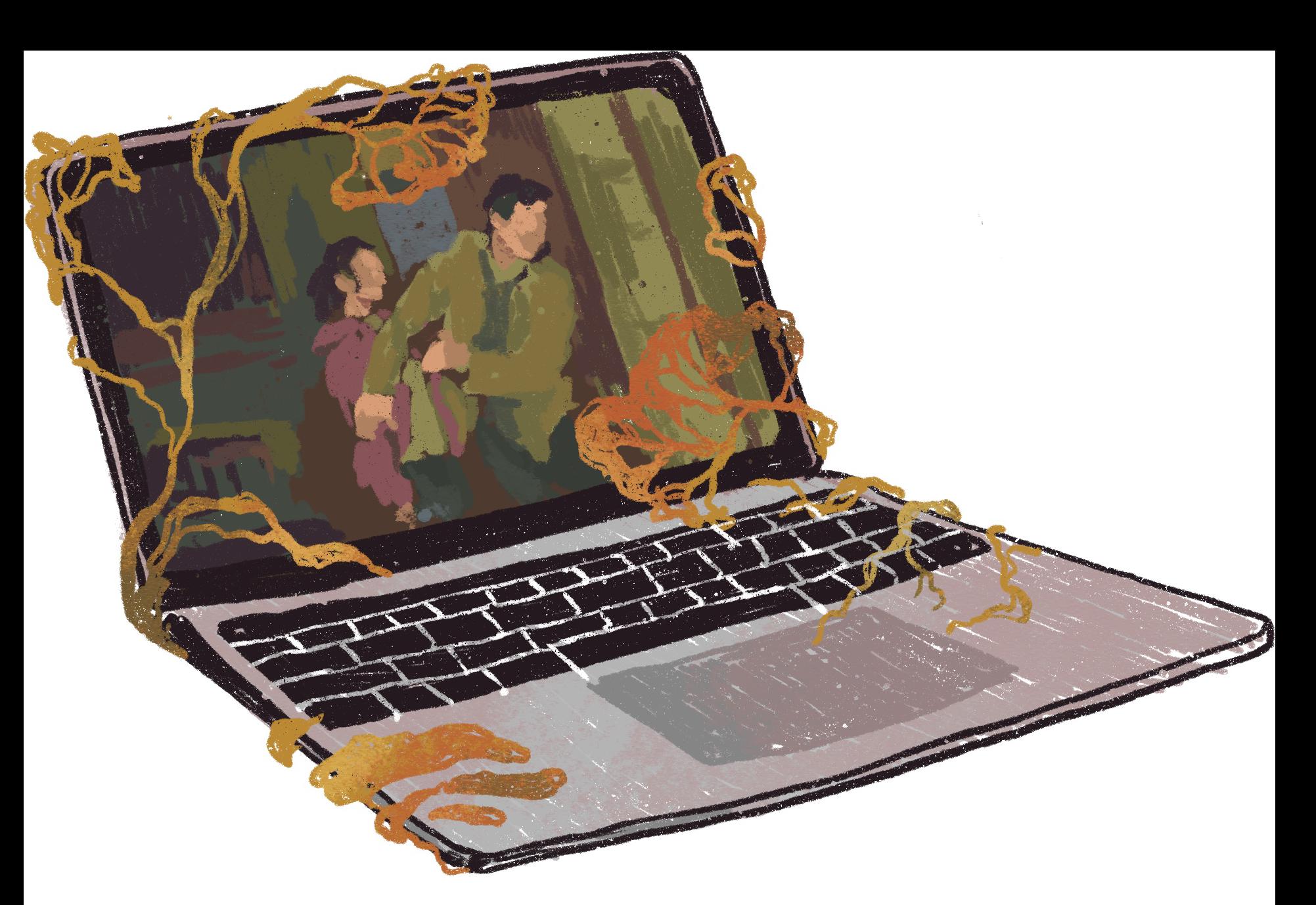
Later in the show Joel and Ellie are taken captive by Henry and Sam, brothers trying to escape Kansas
City. They ultimately do not survive because of a morally complex decision Henry makes out of love for his brother. At the midpoint of the season, I was focused on the differing ideologies of the characters. I created my own opinions of each character
determined whether they were good or bad. It seemed like Druckman and Mazin were aware of this because at the end of the fifth episode, they placed the show’s most dramatic action sequence which cements who is the true villain in this world, the infected.
In the next episode, Joel reunites with his brother Tommy and meets his new wife Maria in Jackson, Wyoming. The town is a symbol offor paradise: a self-sustaining community without violence, or currency,
Copyright © 2023 Washington University Student Media, Inc. (WUSMI). Student Life




ANNABEL SHEN & ALICE GOTTESMAN | MANAGING & SENIOR SCENE EDITORS | SCENE@STUDLIFE.COM STUDENT LIFE 3 THURSDAY, APR 20, 2023
is a financially and editorially independent, student-run newspaper serving the Washington University community. Our newspaper is a publication of WUSMI and does not necessarily represent the views of the Washington University administration. VOLUME 144, NO. 22 Via Poolos Clara Richards Editor-in-Chiefs editor@studlife.com Avi Holzman Managing News Editor news@studlife.com Annabel Shen Managing Scene Editor scene@studlife.com Reilly Brady Managing Forum Editor forum@studlife.com Hussein Amuri Managing Sports Editor sports@studlife.com Ved Patel Managing Chief of Copy Kellen Wang Head of Design Tuesday Hadden Head of Illustration James Ellinghaus Nina Giraldo Senior News Editors Elle Su Zoe Oppenheimer Senior Photo Editors photo@studlife.com Alice Gottesman Senior Scene Editor Mia Burkholder Cathay Poulsen Chiefs of Copy Jared Adelman Senior Multimedia Editor Sydney Tran Design Editor Ian Heft Elias Kokinos Riley Herron Sports Editors Sylvie Richards Jasmine Stone Senior Forum Editors Amelia Raden Jordan Spector Junior Forum Editors Jamie Nicholson Junior Photo Editor Zara Shariff William Labrador Junior Scene Editors Lily Taylor Zach Trabitz Aliana Mediratta Junior News Editors Brooklyn Hollander Samantha Elegant Gracie Hime Copy Editors Camden Maggard Social Media Editor Tim Mellman Newsletter Editor Grayce Cooper Clara Richards Designers Tony Tong Senior Web Editor Paige Steuber Senior Web Designer Adrienne Levin Coleman General Manager a.coleman@studlife.com Sarah Huff Advertising Sales Manager huffs@studlife.com HAPPY Graduation Save $5.00 ON YOUR PURCHASE OF $20 OR MORE *RESTRICTIONS APPLY NOT VALID ON PRESCRIPTIONS SALE ITEMS POST OFFICE OR LIQUOR ONE TIME USE ONLY ONE COUPON PER CUSTOMER EXPIRES MAY 25 2023 * Here is our gift to you! Within walking distance from campus behind Hi/Tec Copy 314-802-7012 | millbrookrx com 7010 Pershing Ave, University City, MO we take bear bucks We are a bit early but... W A S H U HBO’s The Last of Us questions what it means to love, endure, and survive AVI HOLZMAN MANAGING NEWS EDITOR ILLUSTRATION BY TUESDAY HADDEN ILLUSTRATION BY TUESDAY HADDEN
Low on Pell: WashU and the infamous 2014 New York Times article
“I don’t doubt for one second that [WashU’s Pelleligible] numbers would have improved as much if the New York Times had not blasted it as the worst in the country when it came to socioeconomic diversity,” James Murphy, deputy director of higher-education policy at Education Reform Now, said.
In 2014, the New York Times (NYT) released an article that labeled Washington University as the worst elite university in the country in terms of socioeconomic diversity, as it had the lowest percentage of Pell-eligible students.
At the time, only 6% of undergraduates received federal Pell Grants, which typically go to students in the bottom 40% of the income distribution. In prior years, The NYT showed that WashU rejected dozens of qualified low- and middleincome students instead of giving them financial aid under the need-aware admissions system.
Murphy thinks that exposé pieces like the NYT article are good for creating change. “Why do organizations like Education Forum Now and other organizations call attention to schools that are doing a bad job on this front?” Murphy said. “Because it’s a successful strategy to drive them to do better.”
Stephen Burd, a senior writer and editor with the Education Policy program at New America, agrees with Murphy, but believes that while calling WashU “the nation’s least economically diverse top college” played a huge role in pushing WashU to change, it wasn’t the determining factor.
“I think [the article] played a big role in at least
accelerating whatever efforts that they were considering,” he said. “[But], I mean, they did hire [Holden Thorp] who wanted to call for that. Calling it the least socioeconomically diverse college in the country [helped].”
Holden Thorp, former WashU Provost between 2013 and 2019, is arguably one of the most influential players in the fight to socioeconomically diversify WashU and make need-blind admissions a reality. Before being employed at WashU, Thorp was the Chancellor of the University of North Carolina at Chapel Hill, a school that was praised at the time for its work in the area of socioeconomic diversity under his leadership.
“Holden Thorp was [a] significant player for us, because he’s sort of shared our mission,” Lauren Chase, former president of Washington University for Undergraduate Socioeconomic Diversity (WU/FUSED), said. “He took the student activism that we were doing and used that to help the board members understand that this was important, which I think was able to help move the needle.”
The decision to hire Thorp under the Provost position, as Burd pointed out, wasn’t a decision out of the blue. While a lot of attention had been given to the 2014 NYT article, it wasn’t the first article released by the NYT calling out WashU Pell-eligible numbers.
“I had been [calling out WashU] for a while,” said Burd, who in 2013 wrote a long research paper for New America titled “Undermining Pell: Volume II. How Colleges’ Pursuit of Prestige and Revenue
Is Hurting Low-Income Students.”
“The NYT just has a reach and power that goes way beyond,” he said.
In the summer of 2013, the NYT released an article shining a light on the state of Pell-eligible numbers at America’s prestigious universities. The piece showed that WashU was at rock bottom.
“When NYT published that first article in 2013, Thorp knew another shoe was going to drop,” former WashU student Wesley Jenkins said in his 2019 Chronicle article “Washington U. Is No Longer America’s Least Economically Diverse College. Is That Good Enough?”
“So he started putting the numbers together. By the time the second article came out a year later, Thorp was prepared,” Jenkins said.
“When [Thorp] interviewed for his job in January 2013, he told the search committee that making WashU more socioeconomically diverse should be one of the university’s top priorities,” Burd wrote in a 2015 New America article detailing WashU’s new plan to tackle socioeconomic diversity.
That same summer, in 2013, then-Chancellor Mark S. Wrighton released a message in The Record explaining why WashU operated the way it did with socioeconomic diversity and what the school was planning to do to tackle the problem.
“Since my arrival as chancellor, we have followed a ‘need-conscious’ policy, with the specific goals of achieving quality, diversity, and affordability,” Chancellor Wrighton said “Affordability means doing everything we can to make it possible for
qualified students to attend Washington University, regardless of ability to pay.”
In January 2015, in an interview with Wrighton and Thorp, the NYT released another article on WashU titled “The Least Economically Diverse Top College, Seeking to Change.” The piece was a detailed layout of WashU’s plan to expand its financial aid program.
The plan was simple: double the share of undergraduates with Pell grants on the Danforth campus to at least 13% by 2020.
To achieve their goal, WashU stated that it would commit about $25 million a year on top of an existing financial aid budget of $100 million and a total campus budget of $600 million.
In 2018, to address the issues pointed out by the NYT articles, Wrighton announced that as part of the university’s ongoing fundraising campaign Leading Together: The Campaign for Washington University (a multi-year
fundraising campaign and the largest in WashU history), WashU would establish the goal of raising $330 million for scholarships and fellowships to support students with financial need.
By the conclusion of the campaign on June 30, 2018, WashU was able to raise $3.378 billion in gifts and commitments compared to its original goal of $2.2 billion. The original goal of $330 million for scholarships to improve affordability and accessibility for students with financial need was surpassed, with a final number of $591 million.
Since the infamous 2014 NYT article, WashU Pell-eligible numbers have increased from 6% to 20%.
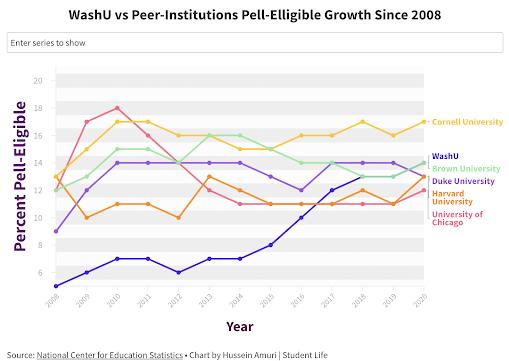
In entering the 20% range in Pell-eligible students, WashU went above and beyond its original 13% pledge — a goal that they actually reached in 2018.
In 2019, Chancellor Andrew Martin and WashU announced the WashU Pledge, a financial aid program that provides free undergraduate education to incoming first-years from the state of Missouri and
the area of southern Illinois. The pledge is awarded to incoming first-year students who are Pell-eligible or from families with annual incomes of $75,000 or less. The WashU Pledge covers the full cost of a WashU education, including tuition, room, board, and fees. Despite the improvement in socioeconomic diversity, Murphy said that the University shouldn’t be celebrating just yet. He argues that the numbers are as good as they are largely thanks to the fact that WashU had an extremely low number of Pell-eligible students in 2013 and 2014 for a university of its size and resources.
“The problem with talking about percent increases is that it’s always that [good] if you start really low — it’s easy to look like you’ve improved a ton because the number was so abysmal,” Murphy said. “[WashU] went from being 30th worst in the country on Pell shares in 2015 to 88th worst in the country on Pell
in 2020.”
Does WashU Cares truly care?
ZARA SHARIFF JUNIOR SCENE EDITOR
WashU Cares, a facultyrun organization focused on directing students towards the adequate mental, academic, and social resources they need to thrive on a college campus, hopes to continue expanding its presence at WashU. Supporting each student on a case by case basis, WashU Cares works with higher-level administration to ensure students get the treatment that is best suited for their individual needs.
The current director of WashU Cares, Jessica Dyers, believes that her passion for the role will serve the organization well, as it works to grow far beyond its current status. Dyers previously served as a therapist for Habif Health, and her interests are in teaching skills to students and empowering them to adult independently of their families and advocate for themselves.
“I came over here because I am interested in systemic change,” Dyers said.
WashU Cares uses a case management model. With a WashU Cares Referral Form available on its website, any person can file a report for a student of concern. After receiving a report on a student — whether that be from WUPD, from ResLife, from email/phone, or its reporting system which is available to any student online — WashU Cares’ first step is emailing the student detailing what
the organization is, what its scheduling availability looks like, and what the available mental health resources are on campus.
“I view a big chunk of what we do as validating and normalizing students’ experiences, making sure they feel heard and understood, making sure they know what is available to them, and helping them prioritize based off the stressor,” Dyners said. Whether that constitutes a gender identity component, a financial component, or a food insecurity component or even working with students who have been recently hospitalized, WashU Cares seeks to accommodate all students. “A lot of students we are meeting with have a lot of intersectionality going on,” she said.
Previously, students have claimed that the WashU Cares report system is largely arbitrary and does not seem to be making a clear impact on campus. “I did not know WashU Cares existed on this campus,” said Matthew Latronica, a first-year McKelvey student. Another student claimed that while they have not directly filed a report for WashU Cares, they have heard from peers that the reports go unaddressed.
“We are still currently evolving and just got new people,” Dyers said. “When the person filed the report, there was only two of us for 15,000 students — both undergraduate and graduate
— so our ability to respond in the past probably looked a lot different than what it looks like now because we would prioritize reaching out to the student over the reporter.” In the previous system where two faculty were members in charge of over 700 reports, Dyers explained that the student of interest always came first, even if it came at the expense of the reporter staying informed.
“It actually felt really bad. It was not the quality of care we want,” Dyers said.
Now, WashU Cares is a team of four, and hopes to provide a level of care that it was previously unable to do. “I would like a postresponse to a reporter every single time,” Dyers said. “I just think the nuance of our position makes it kind of confusing sometimes. Like what do they do? How do they do it?”
In the past, WashU Cares has received 500-800 annual case reports, excluding the 2020-2021 academic year that was impacted by COVID-19. Of the 780 reports that were filed on 645 unique individuals in the 2019-2020 academic year, 9% were first-year students, 29% were sophomores, 25% were juniors, 23% were seniors, and 13% were graduate/professional students. Of the different report types, the largest majority of cases were filed on students exhibiting distressed behavior and poor mental health.
“What I like to do is advocate for the student
and see if we need to change the system. Is the system in effect a product of racism or discrimination just because this institution wasn’t created for the students who are here now?” Dyers said. “My goal is…let’s make things easy. Let’s be transparent.” Dyers emphasizes the importance of ensuring students know what options they have available to them and allowing WashU Cares to be more student-facing.
While case management was started as a “threat assessment and monitoring students of concern,” Dyers said her big-picture goal to shift WashU Cares into a more preventative framework, where students can be monitored and cared for before they end up at Habif, not after. To do this, Dyers has collaborated with Junior Ethan Greenstein to further explore undergraduate practicums as a way of breaking down barriers and connecting with students. She also noted its initiative to hire more graduate students to help monitor those on medical leave of absences, providing a more comprehensive support system.
When it comes to student referrals, oftentimes WashU Cares deals with students who are resistant to its initial outreach. In that case, case manager Jordan Cooper works to send out more personalized emails to check in on students. However, Dyers noted that a large part of her role in the organization is respecting student
autonomy.
“Just because a student’s emotions make you uncomfortable doesn’t mean you have the right to tell that student how they should make their decisions,” Dyers said. “A big part is how do we allow students to make their own decisions even if that feels uncomfortable to watch?”
As a result, Dyers acknowledges that there is a gap between the work WashU Cares is doing for the student and the information they can share with the original reporter.
Another challenging aspect of communication is that Dyers isn’t always at liberty to discuss updates with the student reporter. “I may not be able to share information with a student reporter because of FERPA; it is a need-to-know basis, and it’s private. That doesn’t mean there isn’t a lot going on on the other side of it,” she explained. This confidentiality policy holds unless the report poses a threat to self or others, which would require the attention of Dean of Students Rob Wild to mandate the student to meet with WashU Cares to have them connected to care.
While the WashU Cares model is not crisis-oriented, its role in student life is more than just referrals. Many students often meet with the WashU Cares team on a weekly basis, with a range of needs from bipolar disorder to eating disorders. The overarching motto
of the organization is “we want what you want.”
Unlike traditional mental health resources on campus, WashU Cares has one main goal: to offer students all the possible options in their pathway to choose what feels right to them. Even if those options feel taboo or aren't traditionally recommended, Dyers believes that the individualized problem-solving that the organization offers is what differentiates them from other student mental health groups.
Dyers noted that oftentimes people don’t have the energy to do the “hustling” that WashU Cares does for students. “I staff a weekly care and concern team meeting with administration, so I work with WUPD; I work with ResLife. I am following up on issues with students and trying to connect the dots and get things answered for themI am doing that information gathering on the back-end of students and presenting those options.”
While the organization has had flaws in the past with response time and communication efforts with students, now with double the staff team and big goals for the future, it hopes to continue making its impact on campus. “I don’t think we’re perfect. But I think we really care,” Dyers said. “We talk about systemic oppression every single day, probably all day long, and I think that is really the core of why we do the work that we do — is to change the system.”
ANNABEL SHEN & ALICE GOTTESMAN | MANAGING & SENIOR SCENE EDITORS | SCENE@STUDLIFE.COM 4 STUDENT LIFE THURSDAY, APR 20, 2023
shares
HUSSEIN AMURI MANAGING SPORTS EDITOR The 2013 Times article The Road to 13% WashU versus peer institutions on the percentage of students Pell-Eligible from 2008 to 2020.
Who’s to blame? Social media, addiction, and the role of influencers
Partridge.
JORDAN SPECTOR JUNIOR FORUM EDITOR
Whether you secretly hate them or secretly want to be them, you probably have feelings about social media influencers. But what is it like actually being one? And if we are to criticize what they do — posting videos and sponsoring brands — is it fairer to critique them, or instead, the system which capitalizes off of them?

I ask these questions with genuine curiosity, for I’ve found myself critical of people like Charli D’Amelio, who make a living off viral videos. Yet when I’m not writing or studying, I post my own art in the zoo of human creations and even work as a content creator for Washington University’s admissions team. Whether it’s due to this semi-hypocritical distaste for large influencers or something deeper, I find that social media users like myself share a feeling of some subterranean problem causing us anxiety and discomfort, no matter how much community we find in these online spaces.
One of the incredible things about influencers is that they can be anyone, anywhere. To get some questions answered, I look no further than my campus community. Through a quick Instagram search, I’m able to connect with Shelby Roach, a Class of 2025 architecture student at WashU. She has over 58,000 followers on TikTok, under the username shelby.shots, where she posts videos mainly about her long-distance boyfriend, whom many say resembles young Hollywood celebrity, Louis
When Roach sat down with me at an on-campus cafe, Whispers, she took off her AirPods and admitted to almost forgetting to log in to her architecture Zoom call that morning. We joked about the ridiculousness of still having Zoom classes, and she asked if I’m also in the art school, to which I replied that I am. She seemed unbothered by the idea of being candid and on the record. She told me that she “just made a TikTok ‘cause I was doing it for fun like we all do.”
“It was the day I was leaving home to go to WashU, and ‘cause we’re in a longdistance relationship, I was like I’m going to record us saying goodbye, and anyone can relate, I’m sure,” Roach said.

This first video went viral, sparking a tick in her follower count. Whatever she was doing, the algorithm liked it. Even when her account was closer to 10,000 followers, she was getting over 50,000 views on her videos every time she posted.
“It went from something that was really fun to something where like, oh, I see potential in actually gaining money or gaining something out of this,” Roach said. “I feel like it doesn’t hurt to have a following.”
With that realization of potential, however, also came the added pressure of consistency in posting.
“It’s very stressful,” Roach said, nodding her head. “I’m in college, I’m in architecture, and I have a job, and I’m in a relationship which requires a lot of time. I don’t go to sleep until past 2 a.m., and then before I go to sleep, I tell myself, ‘I need to
PUZZLE Mania
sounds are doing good.”
have a video for tomorrow.’
So then it’s 2 a.m., and I’m like, ‘What is my video?’”
I have never been this committed to posting, but I can relate to this stress, and I’m aware that architecture students are widely accepted to be the most overworked at our school. When I question why one would put themselves through this commitment, I think back to an article I read, which mentions that Mikayla Noquira bought a house from her TikTok income. Top profiles, like Kylie Jenner’s, can make over $1 million per sponsored post, and even
documenting my life on a platform like I do on Instagram with just friends and family who follow me. And yes, every so often there will be a sponsorship, but really I’m only going to accept them if I feel like they fit within my life,” Roach said. Roach’s solution is to be honest with her followers. Still, she acknowledges there is more to be considered in terms of transparency and the time she and her followers spend on their phones.
Emma Lembke started The Log Off movement in an effort to encourage people to rethink the ways we inter-
Not only is this work a real job, but it’s one that can become all-consuming.
“The whole day I’m just checking the video. So my brain is just constantly there,” Roach said. Sometimes, I’m never fully in the moment. I’m always thinking ‘How is my video doing?’ Some days, it can be like my head is fully in the app. Even if I’m not on it, I’m thinking about it. So I do think that there is a part that social media influencers play in it.”
Roach questions the extent to which she plays a role in a world where the Log Off movement is needed, however, making the point that different TikTok accounts have different levels of influence; celebrities like Emma Chamberlain have influenced a lot of fashion movements and trends, whereas Roach considers herself more of a content creator than an influencer, really.
you should post,” Roach said. “It’s like a pattern. That’s why I always post at 11 a.m. The platform plays a really big role in how people use it.”


From my own experience on TikTok, it sometimes feels a bit like gambling –– a dopamine rush from a good TikTok that goes viral, and the desire for that feeling again resulting in posting another video, and another. Not to mention that when you see people thriving, making millions of dollars off of everyday videos, you get the same desire as watching someone win the jackpot. You think to yourself that maybe that could be you, no matter how improbable that really is, given the fact that billions of users are on these apps.
lesser-known accounts can accumulate high earnings; take Jalisa Vaughn-Jefferson’s rise to a $700,000 earning in only six months as a prime example.
However, despite the potential for financial success, building an online identity can come with the pressure of creating a persona that isn’t true to the person behind the account.
“With my followers, I’m very transparent, even when I do have a bad day. I’m just
ILLUSTRATION BY RYAN DAVIS
act with social media. In Lembke’s New York Times feature, she makes the point that social media isn’t going away, but rather, we should consider how we’re spending our time with it. Roach recognizes that this is something she plays a role in too.
“I am posting every day, and I’m forcing myself to post every day, so that means that I’m on social media all of the time,” Roach said. “I have to know what the trends are. I have to know what
In my view, the work I do for WashU is content creation, while branded sponsorships fall more within the realm of being an influencer. But even if the semantics are unclear, is this simply a result of othering, a desire to distinguish my artcentered posts from those of more traditionally defined influencers? And even if there are varying levels of social influence from infrequent posters to paid content creators to verified influencers, does this directly link to a hierarchy of guilt? Does more social influence mean more responsibility in keeping people on the apps, or are we all victims of the same system?
“Even just the apps, they tell you specific times when

“Yeah, it definitely is,” Roach said. Then a bit quieter, “I feel like that can become an addiction.” She drags out the ending of this last word. “But yeah, and then when it doesn’t do good, you start feeling like, ‘Oh, is this it? Am I done?’”
I appreciate her trust and authenticity. As we discuss this with smiles on our faces, there’s something sinister about what we’re coming to terms with: the fact that we’re deeply addicted to our phones, that the place we’ve been directed to for entertainment and art and relatability has sucked us into a void, translated our
Read the rest online:

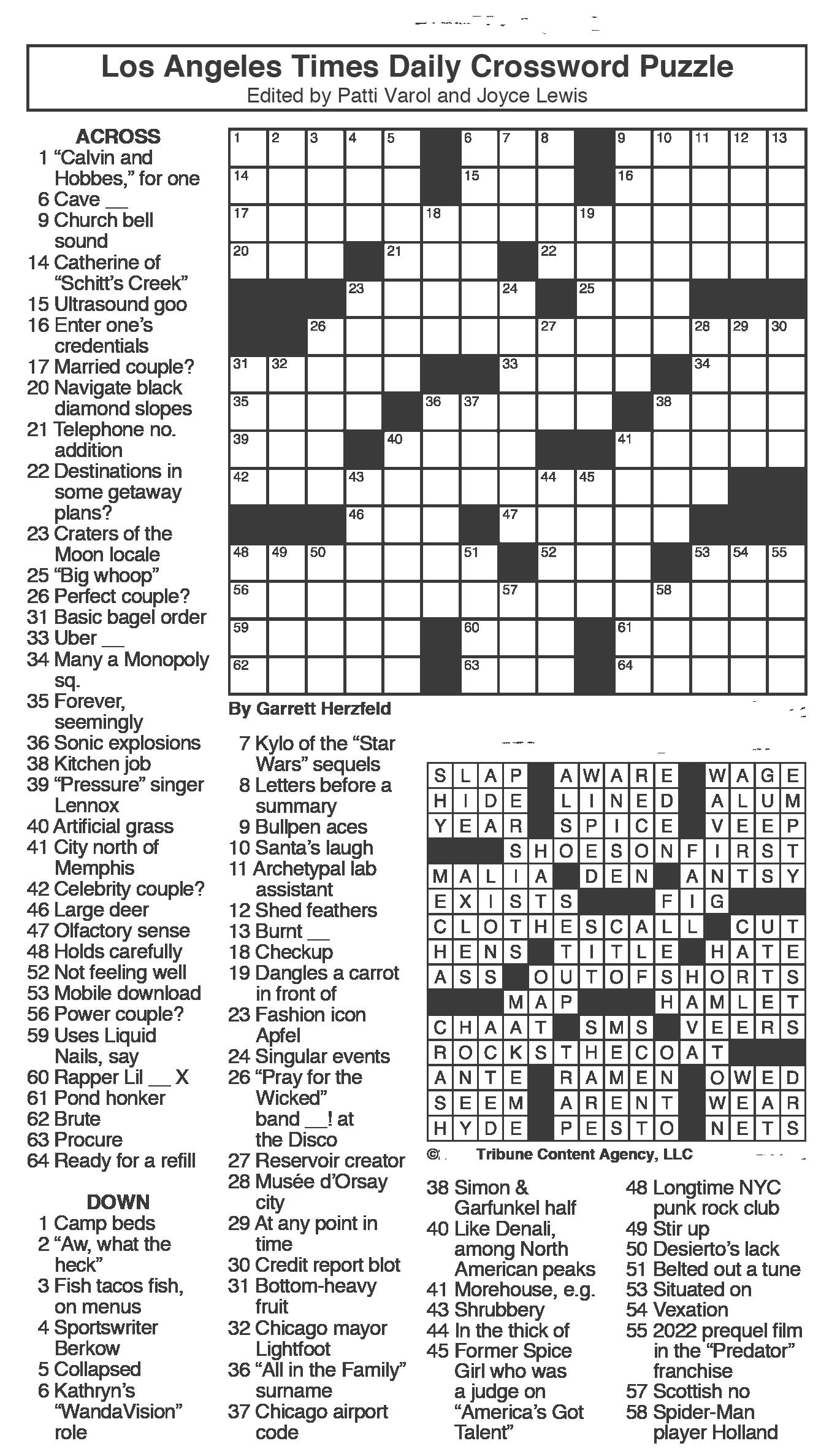 SPONSORED BY:
SPONSORED BY:
REILLY BRADY | MANAGING FORUM EDITOR | FORUM@STUDLIFE.COM STUDENT LIFE 5 THURSDAY, APR 20, 2023
STAFF PERSPECTIVES
Content warning: This article contains discussion of transphobia. See the editor’s note below the article for resources.
On April 13, Missouri
Attorney General Andrew Bailey approved a bill that will significantly limit access to gender-affirming healthcare for adults, citing the consumer protection law as his reason and launching an investigation into transgender care. This regulation will take effect on April 27, 2023 and is set to expire in February 2024.
As we near April 27, Washington University cannot stay silent. Transgender and non-binary students deserve to receive vehement and unwavering support from their university as Missouri lawmakers continue to threaten their safety by attacking their rights to gender-affirming care.
Restrictions — and in some cases, prohibition — follow a former employee’s accusations of malpractice at Washington University’s Transgender Center at St. Louis Children’s Hospital. The employee’s conclusions were debunked by transgender activist Erin Reed. The University must ensure
that WashU’s Transgender Center continues to provide care to their patients amidst restrictions that may be unavoidable.
Bailey’s actions also appear to be in response to protestors advocating for a ban on puberty blockers, hormones, and transitional surgeries for legal minors, and are happening almost concurrently with the Missouri State House’s choice to ban trans athletes from girls’ and womens’ sports.
Gender affirming healthcare — a vital resource for many transgender and non-binary people — will now be mostly inaccessible to Missourians. Before access to care is allowed, the new bill requires that adults will need to undergo 18 months of therapy meant to evaluate “influences” on patients’ gender identities, and be cleared for mental health disorders like depression and anxiety. There is an additional requirement for “social contagion evaluation,” which involves 15 years of medical follow-up, and the law also bans the provision of gender-affirming care to trans adults with autism.
Unlike initial attacks
EDITORIAL COMIC


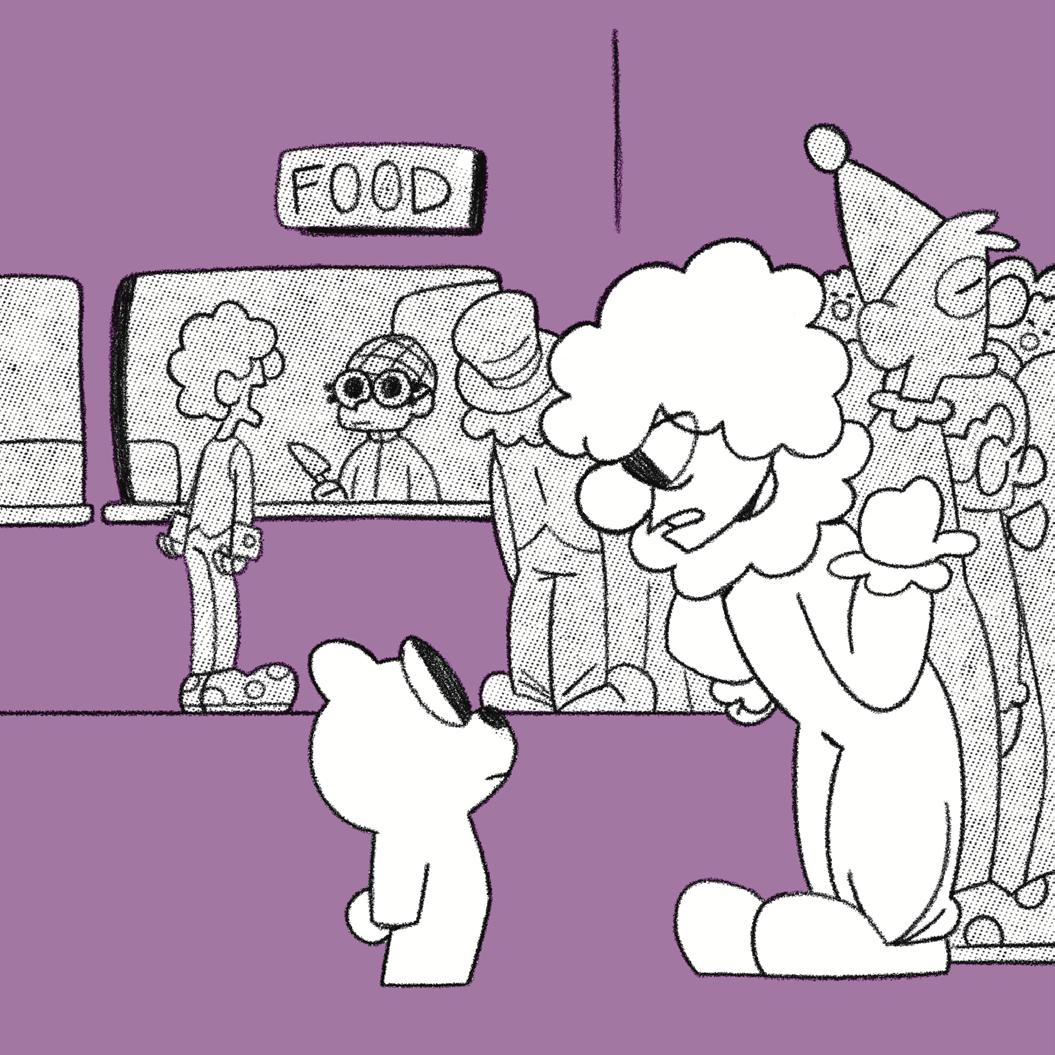
STAFF EDITORIAL
primarily focused on the legality of providing genderaffirming care to minors, this new bill impacts our peers; it impacts our wider St. Louis community; it impacts people across the gender spectrum; it impacts minors and adults; it impacts those who’ve begun treatment and those who haven’t. It impacts us.
WashU’s words have an effect on the St. Louis community at large — the University directly contributed $2.9 billion to the city in 2021 and accounted for over 47,000 of its jobs — and this same power and influence should be poured into clear statements of support for transgender students as well as the development of community and campus resources that would combat the Attorney General’s extremist measures.
Additionally, the University should consider increasing the number of free counseling sessions available at Habif Health & Wellness Center to support queer and transgender students who are experiencing increased distress due to these restrictions and to help fulfill new therapy requirements, a service that Habif
has been providing under the conditions in existence prior to the new bill. WashU must ensure that this vital care continues to be accessible to students as the bill goes into effect.
Habif also currently provides training to their staff on LGBTQIA+ student care. However, in addition to these resources, WashU should consider organizing a clinic similar to that at St. Louis University, which is specifically dedicated to providing therapy, advocacy, and validation to queer and trans people of all ages in the St. Louis community.
Two months ago, we called upon the University to condemn Missouri lawmakers’ assault on transgender rights and show clear support for gender-affirming care and other essential health services. With the introduction of this new bill, we repeat this statement and emphasize the urgency and importance of the University’s words and actions as trangender rights continue to be attacked by Missouri legislators.
Editor’s Note: Below are resources to support members of the trans community.
The Trans Lifeline works to connect trans people with emotional and financial support, along with other community resources. Trans counselors can be reached 24/7 at 1-877-565-8860.
The Trevor Project, a suicide prevention organization for the LGBTQIA+ community, can be reached 24/7 by calling 1-866-488-7386 or texting START to 678-678.
In response to the bill, Planned Parenthood is opening pop-up clinics and additional appointments for transgender care in Missouri. Book an appointment and learn more on their website.
The St. Louis Queer+ Support Helpline offers resources and support from local, LGBTQIA-affirming peer counselors, and can be reached Friday – Monday from 1 p.m. – 7 p.m. CT at 314-380-7774.
The Metro Trans Umbrella Group facilitates St. Louis-based support groups for trans-masculine, trans-feminine, non-binary and genderqueer individuals,
as well as LGBTQIA+ people of color. Contact information for each group can be found online.
Pinwheels is a support group with meetings in St. Louis for trans and gender non-conforming children, teens, and their families.
Growing American Youth is a social support organization for LGBTQ+ youth who live near St. Louis and are 21 and under and can be contacted via Instagram or Facebook.
The National Queer & Trans Therapists of Color Network provides a variety of identity-affirming resources, including a directory of queer and trans therapists of color.
Trans researcher and writer Erin Reed has created an online map of every informed consent hormone clinic in the United States.
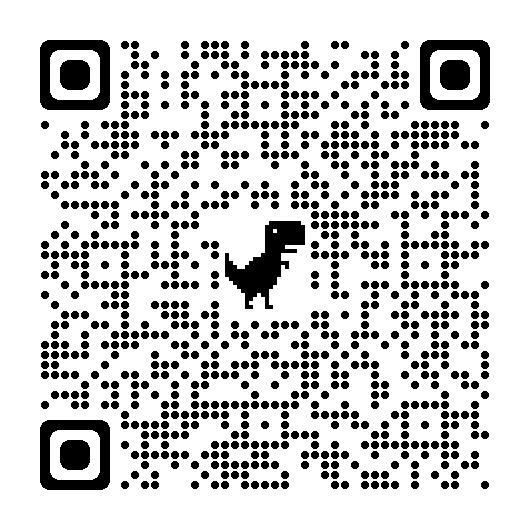
The Gender Affirming Letter Access Project aims to increase access to free letters for gender-affirming medical care by providing a directory of trans, nonbinary, and allied mental health and medical clinicians.
BY RYAN DAVIS
REILLY BRADY | MANAGING FORUM EDITOR | FORUM@STUDLIFE.COM 6 STUDENT LIFE THURSDAY, APR 20, 2023 FORUM 04/13 WINNERS Caption this! Enter this week’s contest
Scan the QR code to enter your submission by 11:59 pm on Monday.
ILLUSTRATION BY RYAN DAVIS
ILLUSTRATION
cannot stay silent on Missouri’s restrictions of gender-affirming care
COMIC BY RYAN DAVIS WashU
editorials
the
of
The editorial board operates independently of our newsroom and includes members of the junior and senior staff. Managing Forum Editor: Reilly Brady Senior Forum Editor: Jasmine Stone, Sylvie Richards Managing Chief of Copy: Ved Patel Managing Sports Editor: Hussein Amuri Editor-in-Chief: Via Poolos We welcome letters to the editor and opinion submissions (or op-eds) from our readers. Submissions may be sent to forum@studlife.com and must include the writer’s name and email for verification. We reserve the right to print any submission as a letter or opinion submission. Any submission chosen for publication does not necessarily reflect the opinions of Student Life, nor does publication mean Student Life supports said submission. OUR VOICE: EDITORIAL BOARD YOUR VOICE: IMMEDIATE SUPPORT LOCAL SUPPORT OTHER RESOURCES First place Now walk back there and apologize to Miss Dorothy for not shaking up your drink. Louie Kotler | Current WashU Student Second place Seen here: First-year Bear’s first war experience in the Subway line Oscar Waldman | Current WashU Student Third place Getting clowned for cutting the taco salad line Caleb Martonfi | Current WashU Student
Staff
reflect
opinion
a majority of editorial board members.
Clean sweep: Baseball Bears beat Brandeis 4-0
Sophomore outfielder
Brandon Buday knew that the Washington University baseball team needed to pull off another win in order to keep their playoff hopes alive.
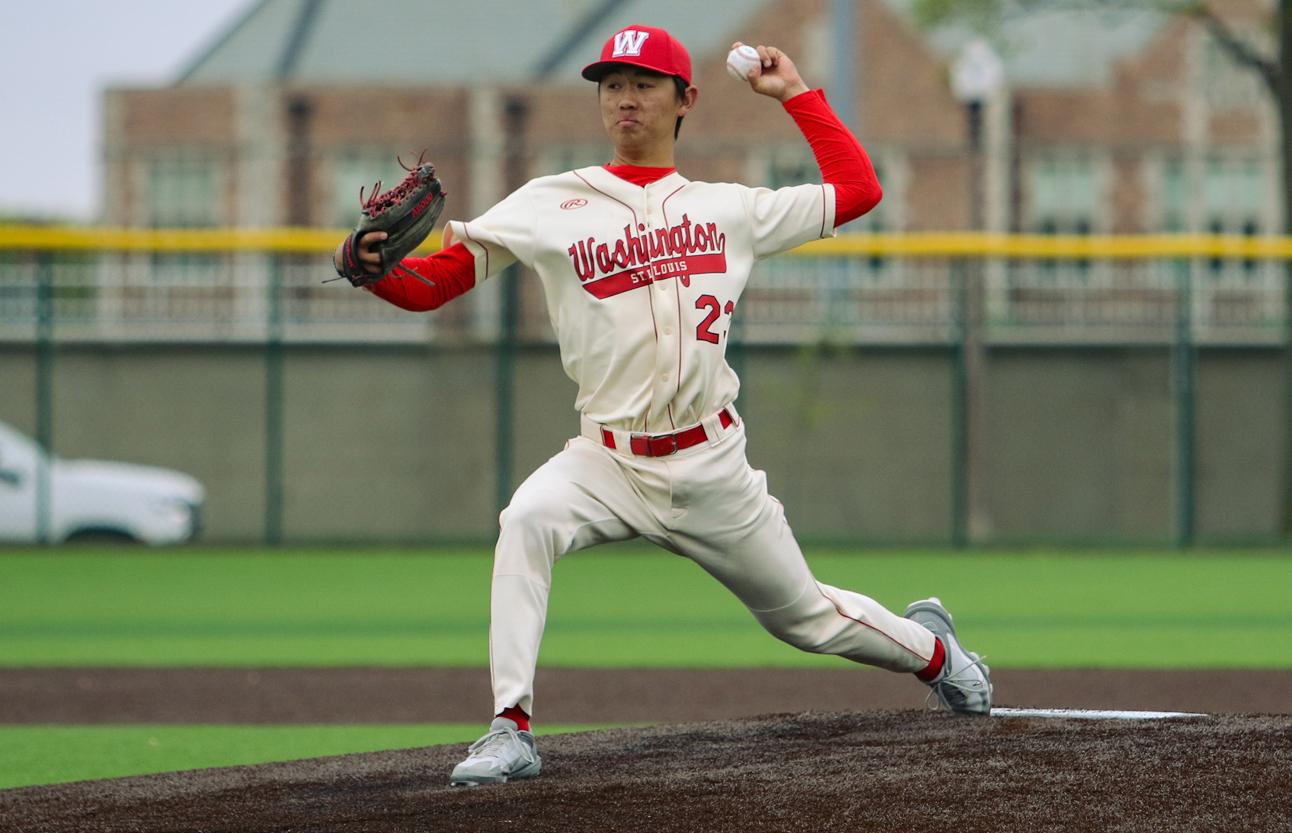
After a torrential downpour had pushed the third game of the four-game series versus Brandeis University to Sunday, the Bears were fighting off fatigue as they attempted to take both games of the doubleheader.
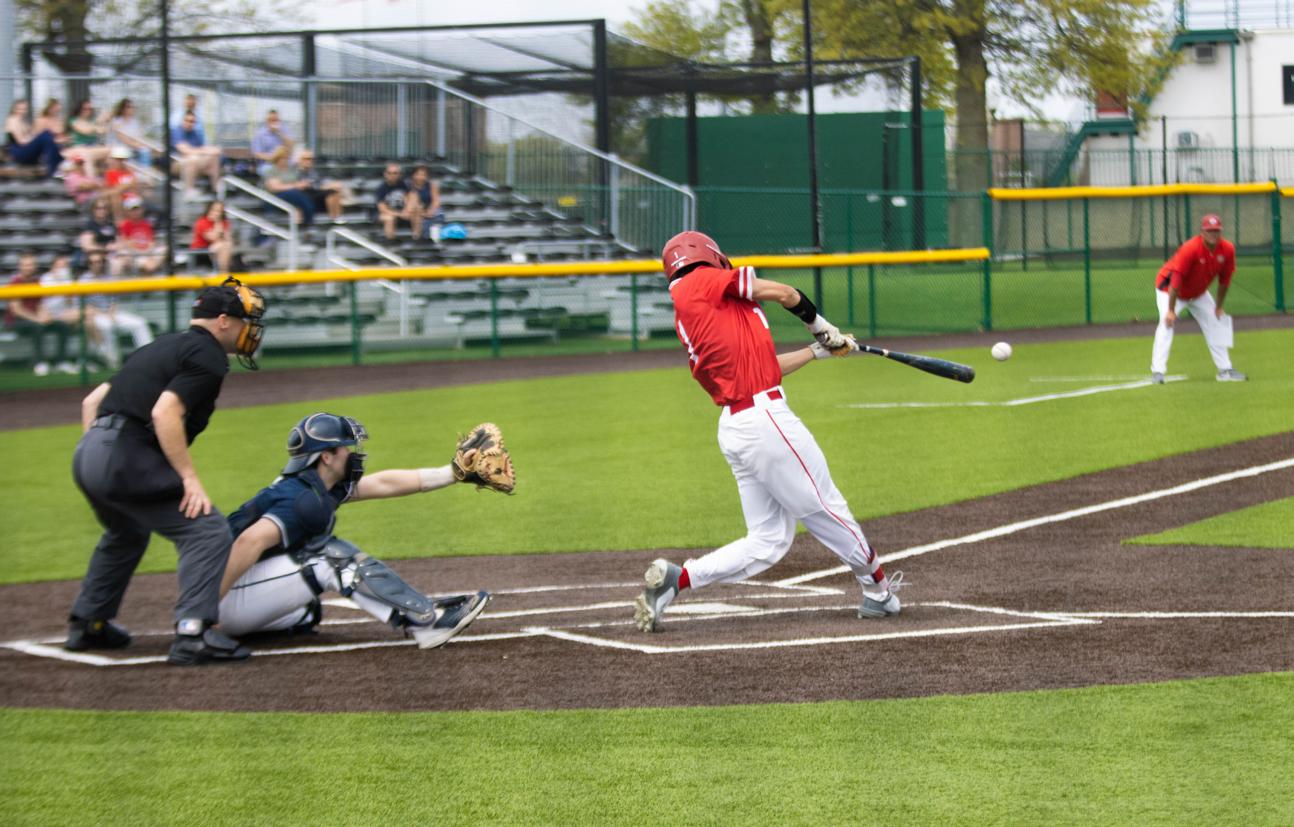
The Bears had coasted to wins in the first two games on Friday and Saturday but had fallen into an early 1-0 hole on Sunday. The team knew it needed to sweep Brandeis before its upcoming Emory series next weekend. With the game tied at one in the fourth inning, Buday came up to the plate with the bases loaded.
“Coach [Pat Bloom] looked at me and told me that I knew what I had to do,” Buday said.
With the count at 1-0, Buday launched the pitch over the right field fence for his second home run of the season, nearly hitting the side of Gregg House and pulling the Bears into a commanding lead.
“Stepping up to the box, I tried to keep it simple,” Buday said. “The pitch came, and it looked like a good pitch to hit. I was able to elevate it, and the rest just happened.”
Rejuvenated by the grand slam, WashU would remain in control for the rest of the series. Aside from the scare early in game three, the Bears looked dominant. One weekend after taking three of four from NYU, the team was able to pull off the ever-elusive UAA sweep, outscoring Brandeis University Judges 50-11. Led by elite starting pitching and consistent hitting up and down the lineup, WashU baseball won the
games 17-4, 11-1, 7-3, and 15-3. The team has now won 10 out of their last 11 games.
Buday, who hits leadoff, led the way with six hits over the course of the weekend, including Sunday’s grand slam. The speedy lefty leads the Bears in hits this year and is top three in nearly every other statistical category.
Buday was one of a number of WashU bats to get to the Judges’s pitching this weekend.

Brandeis has struggled mightily this season — it currently sits last in the UAA standings with a paltry 1-11 conference record. Regardless, it was important for the Bears to take care of business at home, especially after they lost their series versus Brandeis last season.
This year, the Bears’ turnaround has been dramatic — going from 3-13 in the UAA to 9-3 through their first 12 games this year.
Captain Hunter Goldberg says the team’s improvement can be felt in the team’s attitude as much as in the box score.
“It’s a real turnaround from last year … where the other team would come out to lead in the middle of the game and we would shut down because we didn’t have the confidence to feel like we could come back,” Goldberg said. “But this year, it feels really different. Guys are swinging it really well, [and] hitting is contagious. When one guy hits, another guy hits, and then the guy after that hits, and it just gets easier and easier.”
Buday agreed. “The biggest difference would be the culture that we have this year compared to last year. I know this year everyone’s just a lot more bought into the program. Everyone just wants to win more. Everyone has more fight, and then they all want to get that W at the end of the day,” Buday said.
Players returning to the lineup after injury have also helped the Bears both defensively in the infield and offensively, including first baseman Jack Miller and second baseman Harry Mauterer.
“It makes a big difference having Harry and Jack out there,” said head coach Pat Bloom after the team’s win against Rose Hulman Institute of Technology. “From a leadership standpoint, they were here when we made the World Series run, and even though their roles were limited, they definitely had a lot of opportunities to see and be around really good baseball. And so it’s great to see them back in the fold with us, and we are a different team with them for sure.”
WashU will play a fourgame set versus Emory in Atlanta this weekend. The team needs at least
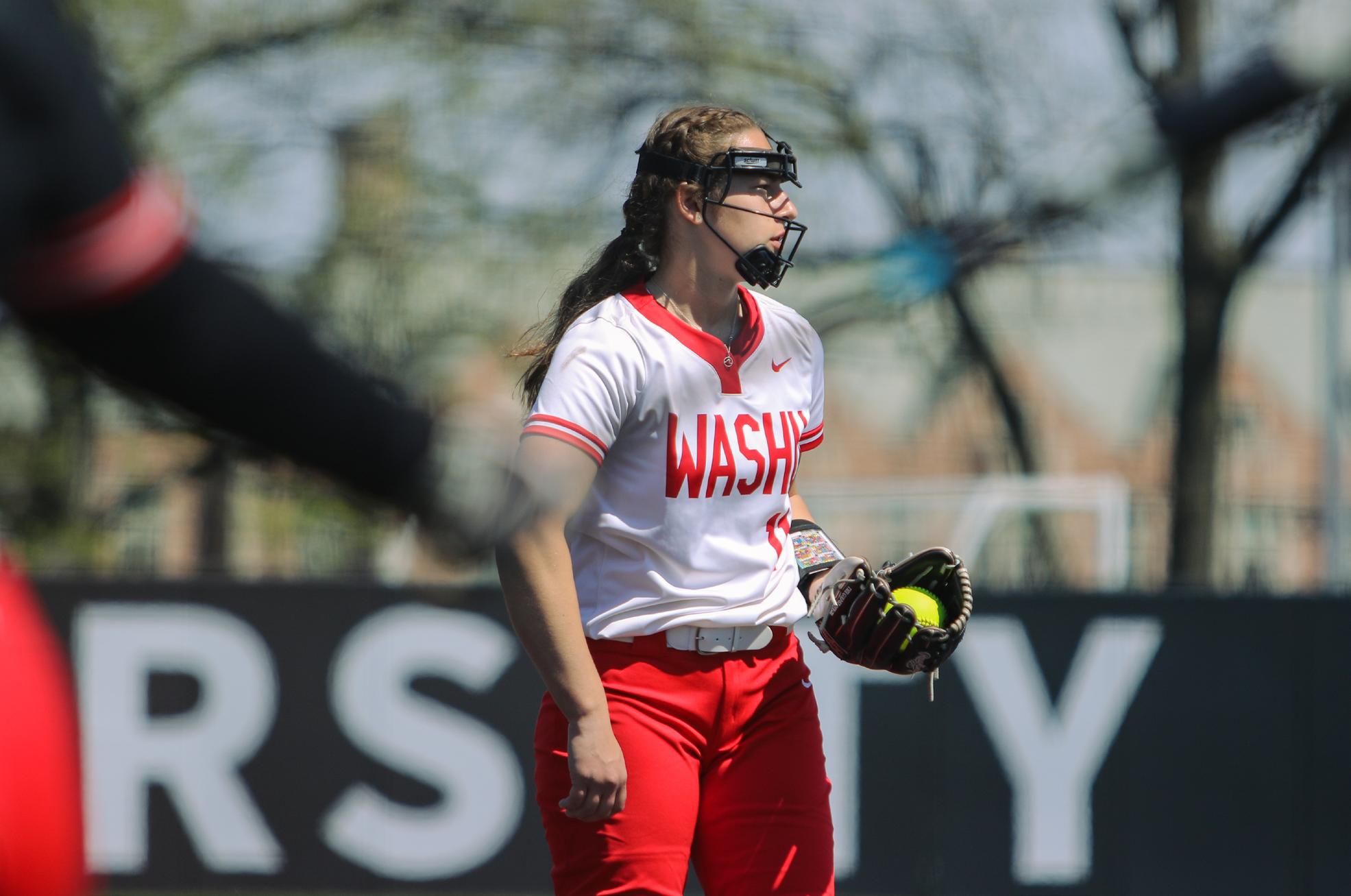
two or three wins over the first-place Eagles to put themselves in a good position to receive an at-large bid to make the playoffs.
Bloom pinpointed the relief pitching as an essential component to the Bears emerging from Atlanta with the series victory. “It will be an extremely stiff test for us,” Bloom said. “But we’re playing decent baseball. We just have got to have more of our young arms step up into sports and give us quality innings.”
Buday is looking to stay hot and says the team has their focus locked in on the series versus Emory.
“We’re all looking forward to it,” Buday said. “It will be one of the biggest series of the year, some of the biggest games we will play all year, so we’re all super excited about it, especially me.”
Softball’s Jordan Rossi talks pitching and softball aiming for postseason selection
The Washington University softball team has been on a hot streak the past few weeks as they look to make the NCAA postseason selection. Central to their success are the performances of sophomore pitcher Jordan Rossi, who has cemented herself as one of the best pitchers in the University Athletic Association (UAA) conference this season. In just her second collegiate softball season, the sophomore from Stamford, Connecticut leads the UAA in the least allowed runs with seven, a feat accompanied by an earned run-average number of 1.13 — the lowest in the conference. Rossi also sits top in allowed hits among UAA pitchers who have started five games or more with 28 hits. Student Life sat down with Rossi to talk about her softball beginning, working with a new head coach, and listening to Harry Styles and Katy Perry before games.
Student Life: So walk me through your background in softball. When did you start playing? How old were you?
And was this a sport that you wanted to play at a collegiate level?
win in their conference play.
Jordan Rossi: I’ve been playing since I was 12 — so a long time. I came to WashU as a pitcher and hitter. So, pretty much still in that role. In high school, I was a first-base. I was interested in playing college softball — that’s always been my goal. I’m also an art major, so I wanted to make sure that I can do both softball and art.
SL: You have a new softball head coach this year, Casey Cromwell. Walk me through that transition from last year. What impact has she had on you, the team, and the way you guys are
playing right now?
JR: So it was definitely a different transition to a new coach, obviously. But she’s been so helpful in terms of understanding my pitching and being willing to work on what I want to work on in practice. She’s always helping me in different ways whether I’m realizing it or not — always helping [by] providing any information that I may need on the field such as the other opponents [and] scouting reports. You read those, and they’re very helpful in terms of our competition.
SL: Coming back to you personally, your pitching stats have been fantastic. What’s your mindset like going into those games to allow you to produce those numbers day in and day out?
JR: Well, I obviously look at the scout reports of seeing the other competitions’ strengths and weaknesses. Also, I really like having a relationship with the catcher, working with them [to] figure out if certain pitches are good enough. Basically, in the bullpen is when I figure everything out — it’s like anything is working.
And then when I go into the game, I feel really strong and confident based on what is working that day, and [I’m] figuring out what to do in certain situations.
SL: What do you do for fun? Do you like listening to songs before games?
JR: Yeah, usually I just listen to music. Do you want specifics?
SL: Yes.
JR: I usually listen to Harry Styles, One Direction, or some Katy Perry.
SL: Any Harry Styles or Katy Perry songs in particular?
JR: The classics, usually.
SL: Talk to me about the current season right now. You guys are on a hot streak. What’s the dynamic within the team been like these past few weeks? What’s working for you guys as you head into the final conference games?
JR: I think the biggest factor is hitting. I know [that early] in the season, we struggle a little bit to get our bat on the ball, but we’ve been working really hard in practices, and we’ve been trying to find different ways of how to be better as a team. I think it’s been really effective these past couple of weeks, if you can see, and I just feel like we’re closer as a team. And that definitely
helps in that mindset of playing — just relying on each other’s strengths and hoping that [we can] get back out whenever it [is] happening.
SL: Going off of that, based on the season that you are having right now, what’s the goal for you personally, or just for the team in general?
JR: Well, obviously Brandeis is coming next week, and our goal is to perform really well against them. In terms of the NCAA, getting the selection poll — that’s our goal. So our dynamic is to continue to focus on our skills, which has been a little bit of a challenge. But in the past couple weeks, we’ve really stepped it up. Focusing on our skills, relying on each other, and backing each other up if things go wrong — that’s pretty much the goal.
SL: So, last question. We ask this in every Athlete of the Week interview. Would you rather have fish for hands or adopt a child every time you hear Bohemian Rhapsody?
JR: Adopt a kid. I do love Bohemian Rhapsody though, so I would listen to it a lot.
HUSSEIN AMURI | MANAGING SPORTS EDITOR | SPORTS@STUDLIFE.COM STUDENT LIFE 7 THURSDAY, APR 20, 2023 SPORTS
HUSSEIN AMURI MANAGING SPORTS EDITOR
CLARA RICHARDS | STUDENT LIFE
Rossi, who has pitched five complete games in the past two weeks, prepares to pitch in the team’s 2-1
IAN HEFT SPORTS EDITOR
CLARA RICHARDS | STUDENT LIFE
Junior second baseman Harry Mauterer sends the ball to first baseman Jack Miller to throw a runner out at first base.
ELLA GIERE | STUDENT LIFE
Brandon Buday slots the ball past the third baseman.
CLARA RICHARDS | STUDENT LIFE
Freshman Isaac Zhang pitched an efficient 4.1 innings against Brandeis, his longest outing of his career.
WashU softball sweeps Emory, keeps NCAA postseason selection hope alive

The Washington University softball team took an impressive sweep of the Emory University Eagles this past weekend. The Bears dominated the four-game series, winning each game as a team to stay comfortably No. 3 in the University Athletic Association (UAA). With the four wins on the weekend, the Bears’ overall record now stands at 17-15, with a mark of 9-7 in conference play.

“This weekend’s sweep was a great momentum builder going into the final weeks of the season and coming off of our series win against Carnegie,” sophomore Maggie Baumstark said. “Heading into [the] Emory weekend was remembering that we’re here playing softball for the love of the game. We play for each other and something bigger than ourselves. Playing for the love of the game has been a big factor in us gaining momentum at this point in the season.”
Game 1 was a nailbiter as the Bears defeated Emory 3-2 in extra innings. Emory put a run on the board in the bottom of the first inning, but WashU tied things up in the top of the third inning. The Eagles scored again in the bottom of the sixth inning, but WashU responded quickly, tying the game in the top of the seventh and final regulation inning.
The rest of the weekend quickly progressed



from their first game as they built on their winning momentum.
“Inning as the away team in extra innings was so exciting! A really gritty game,” junior Emily Talkow said. “It was a moment where everything started coming together for us, and the momentum kept rolling through the weekend.”
The game went to extra innings as neither team could break the deadlock. In the top of the ninth inning, Talkow, who was pinch running after a single by senior Tami Wong, scored what would be the eventual game-winning run on a single by sophomore Olivia Craycraft. Graduate student Holly Stoner picked up her fifth win of the year in the circle, pitching a complete game with two earned runs, four hits, and six strikeouts.
Game 2

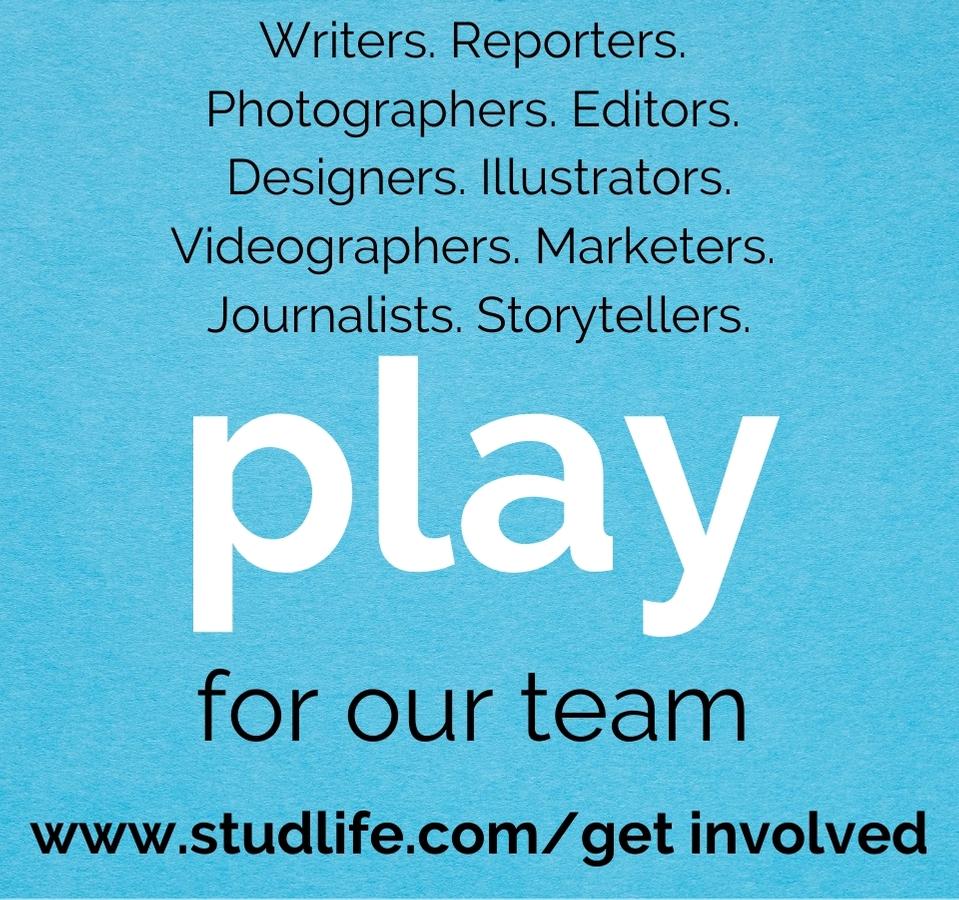




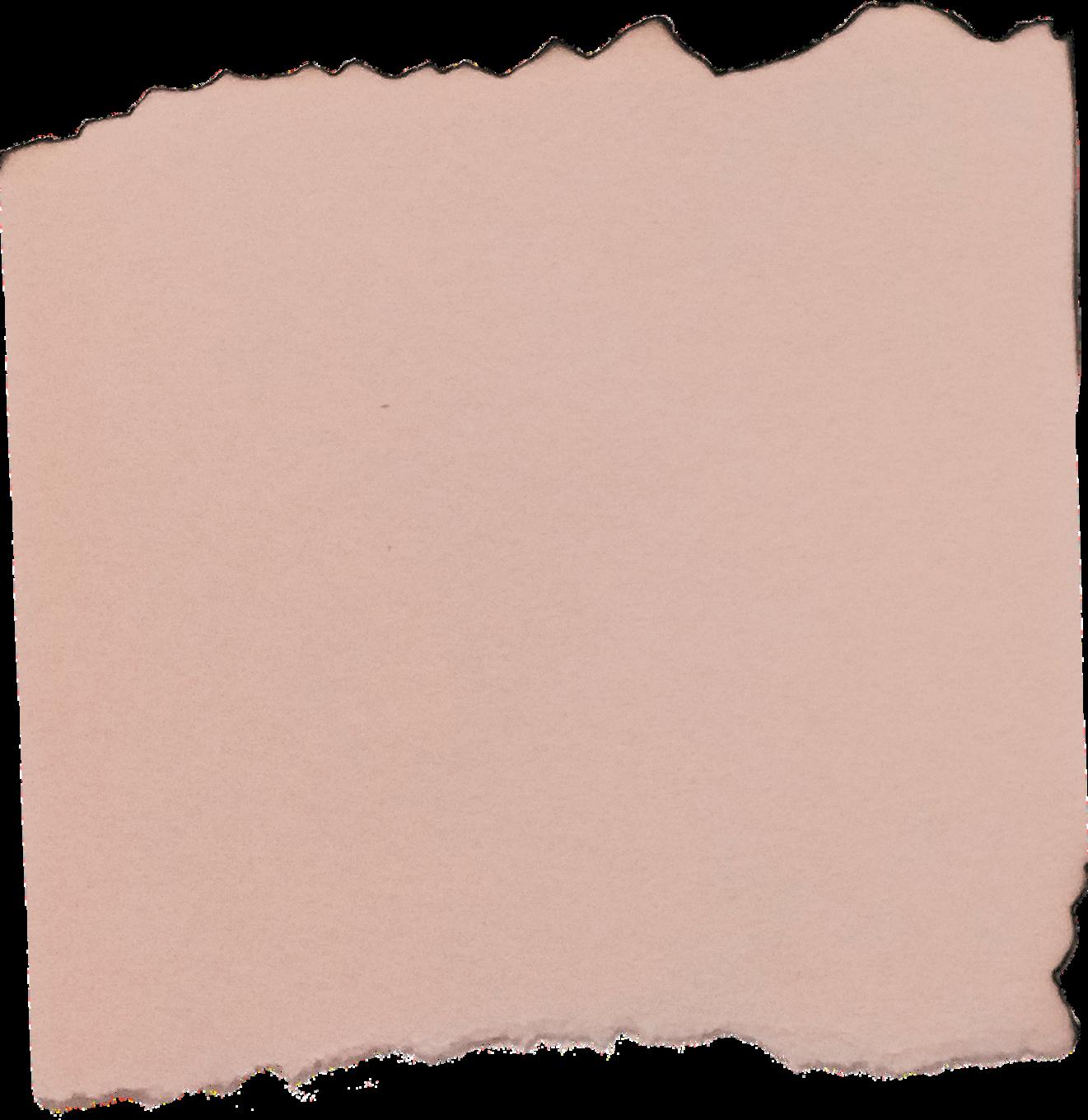
In Game 2, the Bears relied on a strong offensive performance to defeat Emory 11-5. The Bears got on the board early in the top of the first inning. After a single from Graduate student Katie Gould, Senior Payton Irwin hit a two-out double to right, scoring Gould for a 1-0 edge. Emory answered with four runs in the bottom of the first, but WashU responded hotly. The Bears exploded for six runs in the top of the second inning.
The Bears added another run in the top of the fourth inning and two more in the top of the sixth inning.
WashU ended up winning the game 11-5, with Jordan Rossi picking up the win in the circle.

Game 3


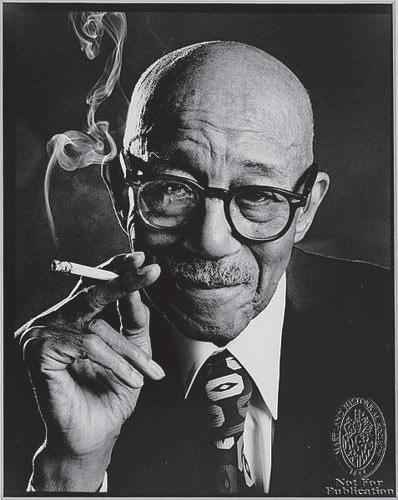
In Game 3, the Bears dominated Emory with another strong offensive showing, winning 12-1 in just five innings. The Bears put up three runs in the top of the first inning. Although Emory scored a run in the second inning, the Bears maintained the pressure, adding three more runs in the top of the third inning and six runs in the top of the fourth inning With the Bears leading 12-1, the game ended early due to a mercy rule, giving the Bears the victory. Stoner, pitching for the second time in two
days, picked up her sixth win of the year in the circle.
When asked what contributed to their big weekend, Baumstark said “Our pitching staff has been an incredible unit all season, but our offense finally exploded this weekend by stringing well-timed hits together and giving our pitchers breathing room on the scoreboard to do what they do best.”



Game 4 In the last game of the series, the Bears quickly established their dominance with a strong start in the top of the first inning. After sophomore Maggie Baumstark reached base on a fielding error, another error on a Payton Irwin hit
allowed sophomore Maggie Baumstark to score, giving the Bears a 1-0 lead. After three scoreless innings, WashU took things up a notch by scoring five runs in the top of the fifth inning. Strong performances by Gould, Baumstark, sophomore Natalia Pilpil, sophomore Erin Reardon, and Wong gave the Bears a commanding 6-0 lead.
Emory managed to score one run in the bottom of the sixth inning but was unable to come back from the strong performance that the Bears put up in the fifth inning. Gould and Reardon were the top performers for the Bears, each going 2-for-4 with one run scored. Pilpil finished 1-for-3 with
two RBIs and scored one run. Rossi, the Bears’ pitcher, was instrumental in their victory, allowing only one earned run and no walks while striking out three opposing batters.
When asked about the impact that this series has had on the team, Baumstark said that the “sweep against Emory was a whole team effort with so many different people coming up clutch and our pitching staff shutting down their offense the whole weekend — four great team wins!”
The Bears are now No. 3 in the UAA behind Brandeis University’s onewin lead. WashU Softball will head to Boston next week to face the Brandeis
HUSSEIN AMURI | MANAGING SPORTS EDITOR | SPORTS@STUDLIFE.COM 8 STUDENT LIFE THURSDAY, APR 20, 2023 MAY MAY 1 B R O O K I N G S D R THE BLACK REP - L V E @ T H E E D I S O N T H E A T R EBUY YOUR TICKETS ONLINE AT WWW.THEBLACKREP.ORG OR CALL 314. 534.3810 STUDLIFE.COM Wherever you are, stay connected: Subscribe to our free e-newsletter... head to studlife.com now and sign up! FACEBOOK.COM/STUDLIFE @ STUDENTLIFENEWSPAPER @ STUDLIFE 314-725-0856 Vi it O W b it F M galleria6cinemas com GET YOUR TICKETS NOW drink. dine. play. WEEKLY BAR, RESTAURANT AND FUN GUIDE 7018 PERSHING AVE 314-726-3030 CLAYTON/WASH U WE ARE THE DELIVERY EXPERTS! V LARGE 1-TOPPING PIZZA $1099EACH CODE: 9011 OPEN LATE! SUN-THURS 10:30AM-12AM FRI & SAT 10:30AM-1AM
CONTRIBUTING WRITER
RACHEL GWON
CLARA RICHARDS | STUDENT LIFE
Senior Kayla Nommensen in action early this season against Carnegie Mellon University.






















 SPONSORED BY:
SPONSORED BY:

























